This former apartment building in Colonia Cuahtemoc, off the Paseo de la Reforma, is now occupied by offices, a common transformation in this part of Mexico City. It was built in the 1930s by a Swiss engineer as a classic International Style concrete frame structure adapted to the benign local climate. As a result of many incremental alterations carried out over the years, the building has become a run-down hodge-podge - the balconies, envisioned as hanging gardens, now face a bustling commercial street; the courtyard is littered with debris and construction supplies; the now-necessary security barriers are off-putting to occupants, visitors and passers-by alike.
The goal of the project is to transform and rejuvenate the building, making it both more functional and more appealing. Our fundamental approach is based on exploiting the advantages of the climate and of the existing building framework through blurring of the boundary between interior and exterior. At the same time, such present-day Mexico City realities as pollution, noise and security problems are recognized and addressed through solutions integral to the design.
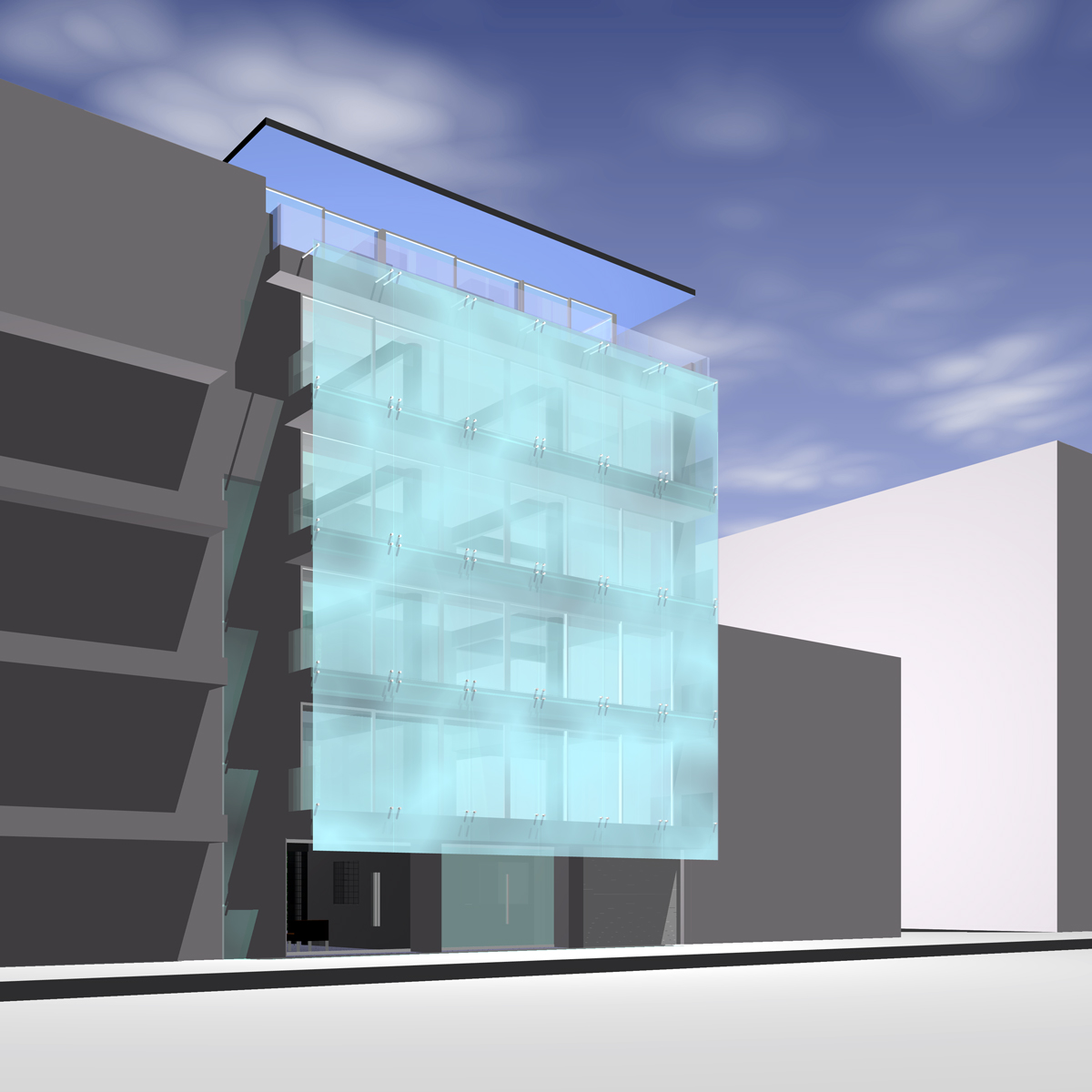
We made three interventions to the building to accommodate it more fully to its current use.
A new glass screen is floated just off the leading edge of the existing balconies, creating a translucent veil that lets in natural light and air and permits visibility from the interior, while protecting the privacy of the building occupants. This is achieved through application of a graduated dot pattern to the glass, which creates an abstract, cloud-like effect.
The courtyard is lined with a vine-planted green screen that allows offices to be open to the exterior while creating visual privacy. From the public spaces of the building, the courtyard is experienced as a walled garden.
A penthouse is added on the roof to accommodate an executive suite
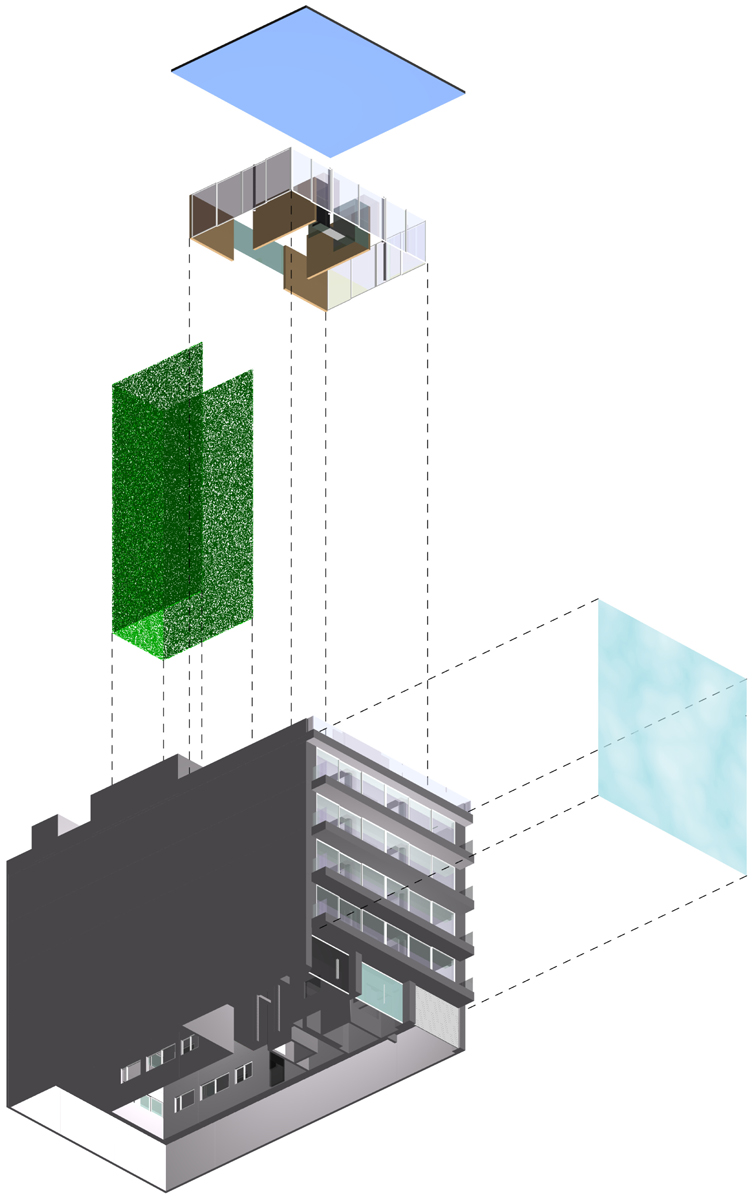
New frameless glazing replaces the storefronts in each of the three street-level bays. The security room is relocated from the exterior wall into the core of the building in order to create a spacious, uncluttered lobby and to establish a view corridor from the entrance to the inner court. At the courtyard side of the lobby, the fire escape is relocated and the lobby wall replaced with folding frameless glass panels; when open, the panels allow the lobby space to flow seamlessly into the court garden.
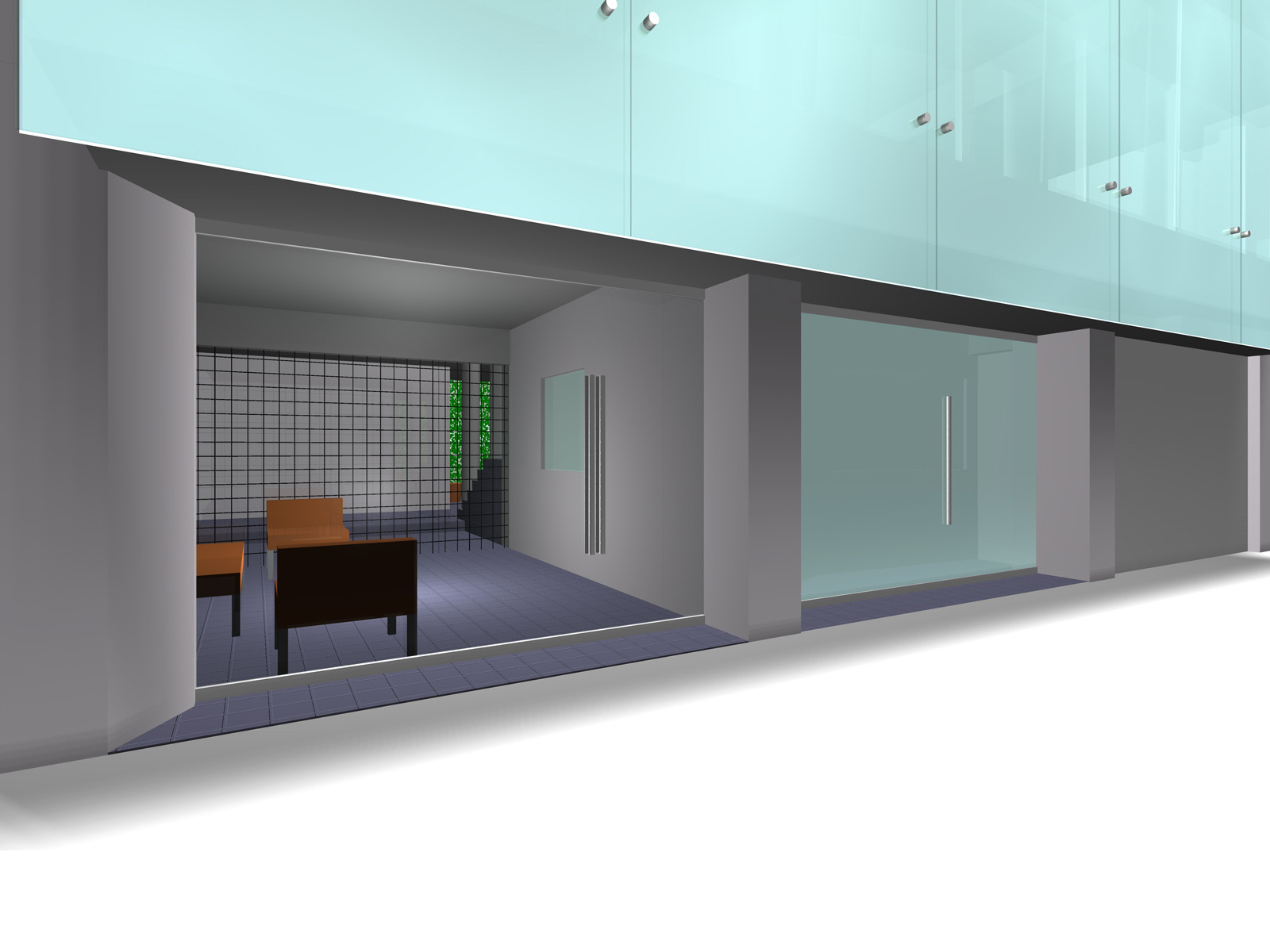
The court provides natural light and ventilation to the interior offices. It is lined on three sides with a living green screen of vines, which transforms it into a walled garden while offering a degree of privacy to the offices overlooking it. The existing elevator lobbies on all floors are extended to the edge of former exterior stair landings to make room for reception areas and to create a sense of arrival. The fourth wall of the courtyard - the elevator lobby wall - is made up of frameless glass panels that can be folded back, opening up the reception areas to balconies planted with aromatic flowers. The existing water cistern in the court is submerged below grade; the rainwater collected in it is used to nourish the new green walls. A small fountain cools the air and creates a soothing sound mask.
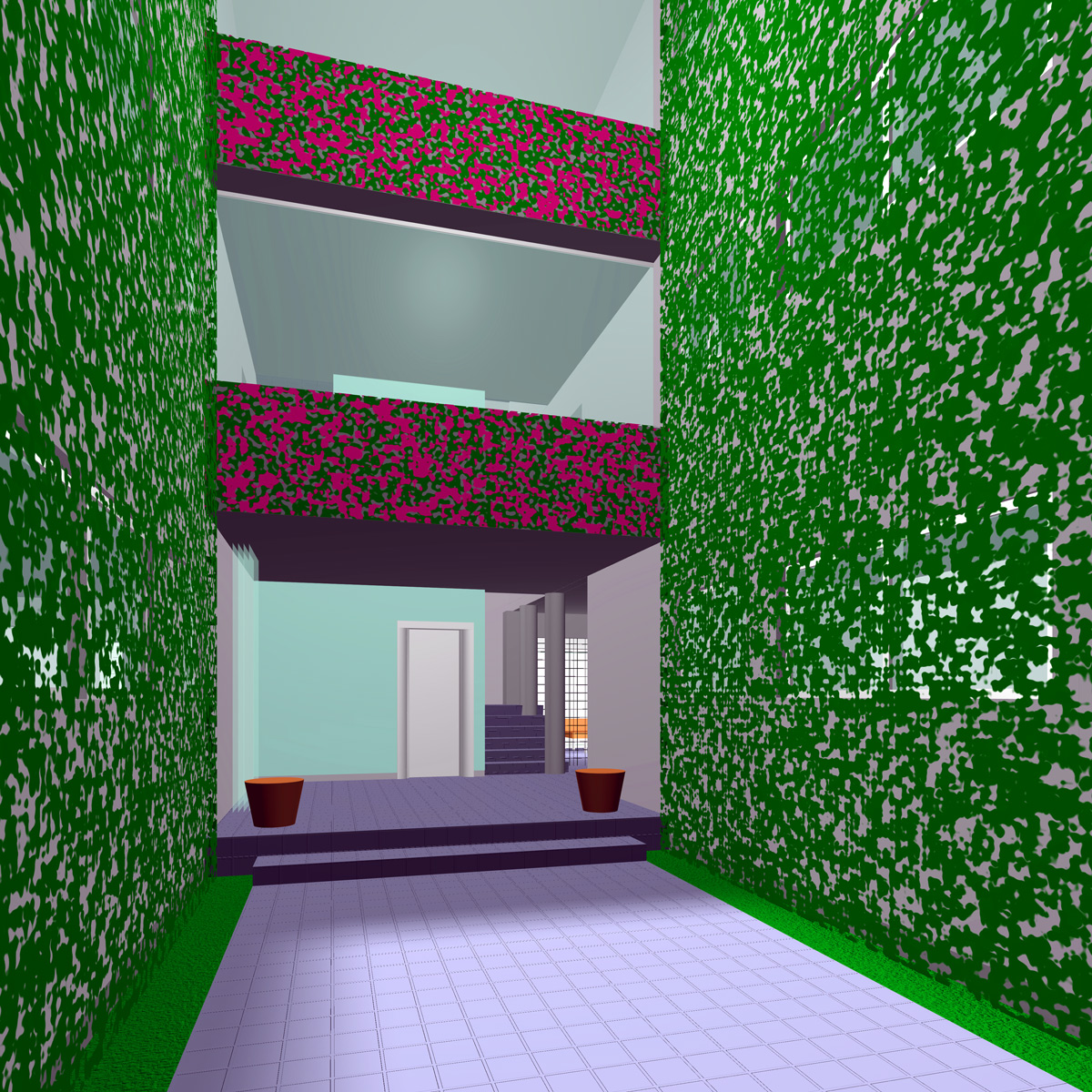
The balconies are open at the ends, allowing for ventilation and for oblique views of the street. The balconies, filled with potted plants, become small gardens. Large, clear-glass sliding doors set in the existing exterior wall can be opened during during the day to spatially expand the interior spaces.
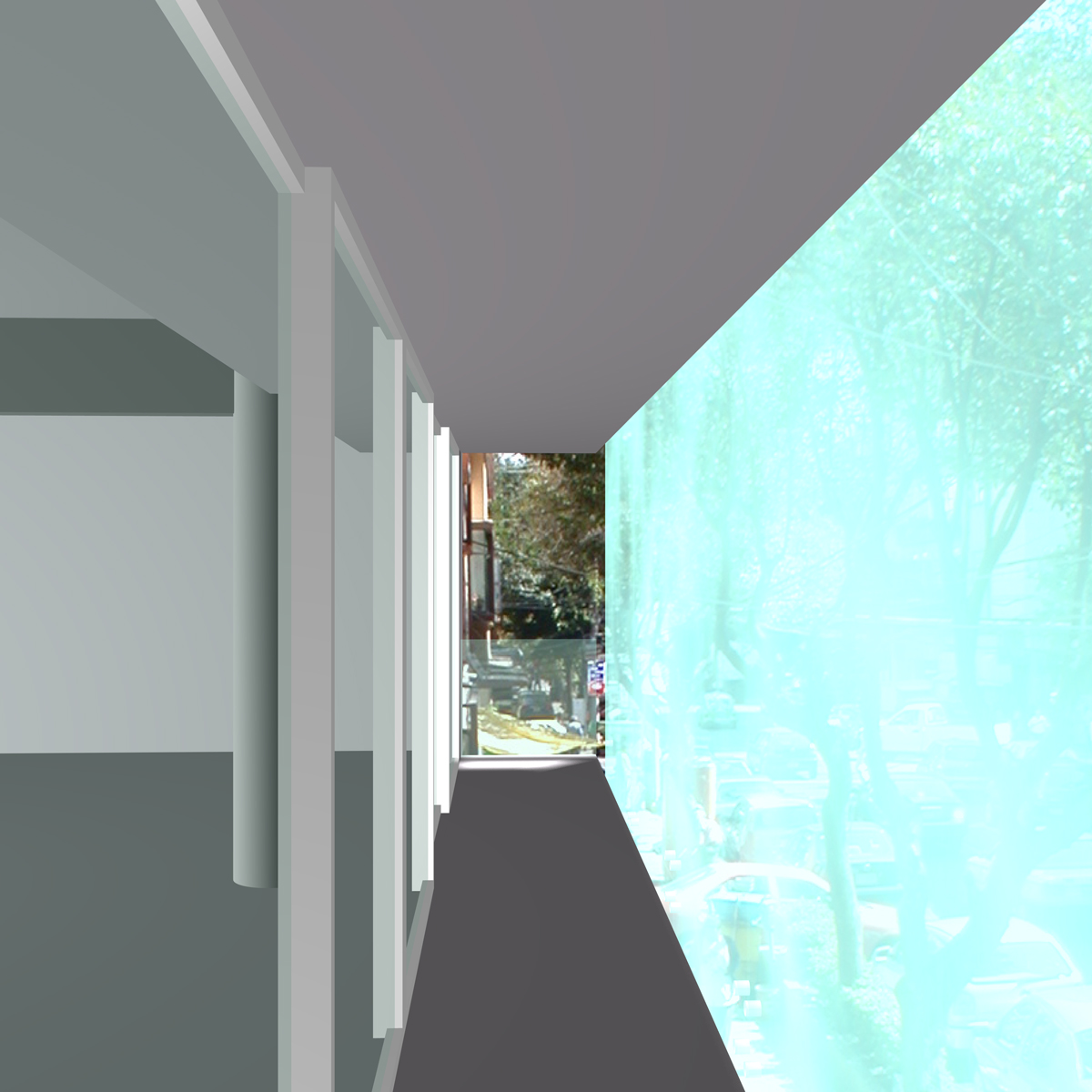
A new rooftop addition at the street side is designed as the executive suite, with a reception area, conference room, bar/lounge, private office, and bath. Large sliding glass doors at the perimeter open out onto a landscaped terrace that wraps around the suite. The thin cantilevered concrete plane of the penthouse roof extends to the edge of the building at the front and sides. Providing shade and protection from the elements at the penthouse level, it also acts as a compositional counterpoint to the plane of the glass facade and as a visual boundary between the building and the sky. The underside of the roof is painted a light cerulean blue, enhancing the sensation of a floating plane.
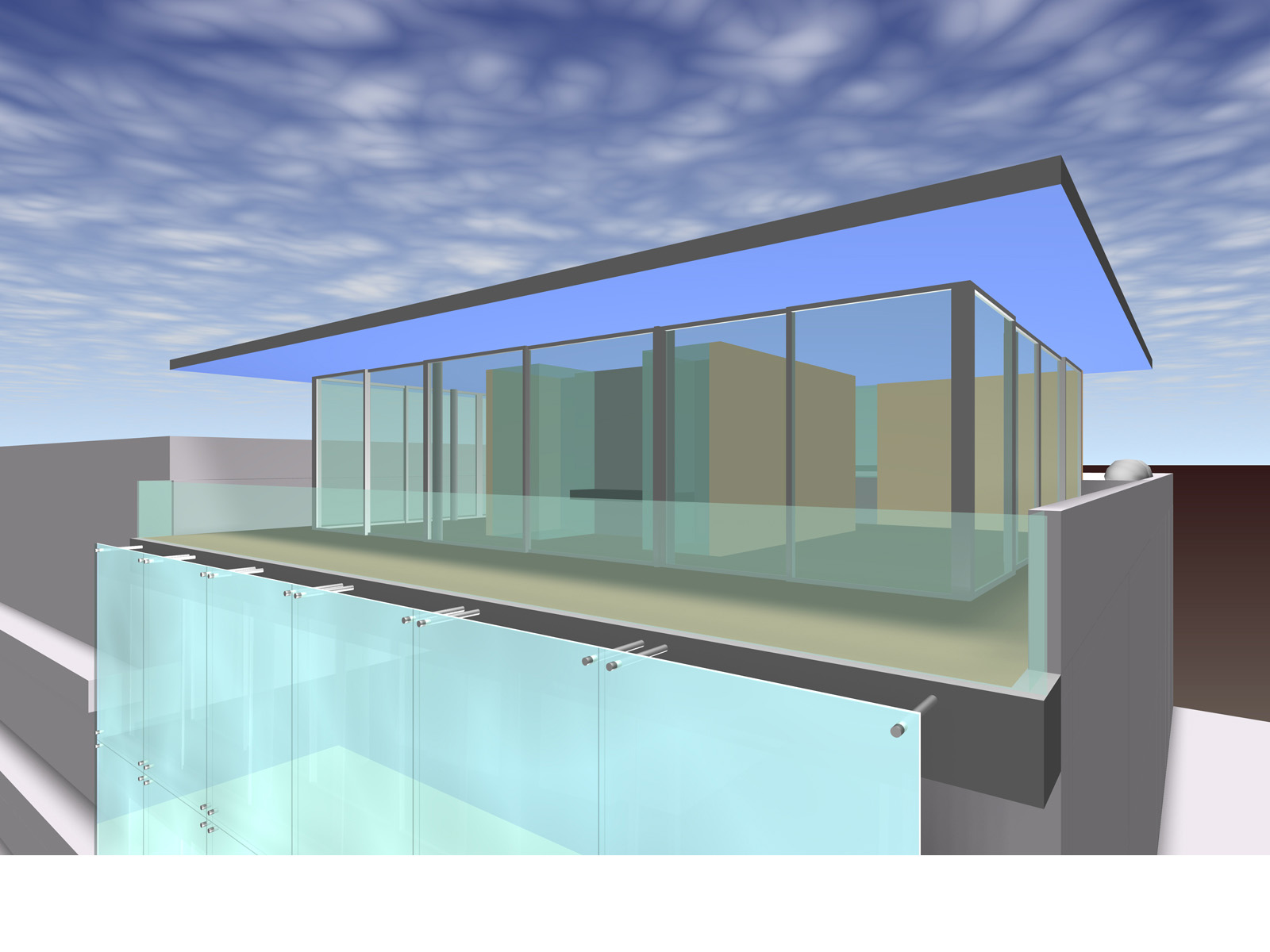
Rio Lerma 333
Mexico City